We Help DTC Brands Acquire Sustained Growth & Long-Term Visibility.

Get More Traffic, Better Sales, And A Healthy Return On Investment
Saffron is a leading DTC agency that specializes in Direct-to-Consumer (DTC) eCommerce, offering a comprehensive suite of DTC services tailored to the unique needs of modern brands. Recognizing the shift in consumer preferences, where a significant percentage now opt to shop directly from brand manufacturers over retail stores, Saffron has developed strategies to help brands stand out in a crowded online retail marketplace.
When it comes to retail vs DTC, DTC businesses are growing at a rapid speed due to the constantly expanding digital space.
Understanding that the DTC business model is, also known as D2C, allows brands to sell products directly from their websites, bypassing traditional retail middlemen, Saffron offers a holistic approach to direct to consumer advertising. This approach begins with a deep understanding of a brand and its customer journey. They emphasize the importance of every interaction between a brand and its customers, viewing each touchpoint as an opportunity to either uplift or potentially tarnish the brand's reputation.
Key offerings from Saffron include:

Performance marketing
DTC focuses on data-driven strategies to directly engage consumers and drive measurable outcomes. It ensures brands optimize their digital campaigns for tangible results, maximizing return on investment in the direct-to-consumer space.

SEO Optimization
Ensuring brands achieve high rankings in search engines, enhancing their visibility in the Direct Brand space.

Conversion Rate Optimization (CRO)
Focusing on enhancing websites to convert visitors into loyal customers.

Email Marketing
Strategically leveraging email campaigns for long-term ROI, a crucial aspect of Consumer Direct services.

Social Media Marketing
Crafting engaging content to elevate brand visibility across platforms.

Influencer Collaborations
Harnessing the power of influencers to bolster brand reputation in the D2C landscape.

Design & Development
Creating websites that reflect the uniqueness of each business, catering to the needs of Direct Brand agencies.

Advertising
Expertly managing ads across major platforms, ensuring maximum reach and engagement.

Retention and Loyalty
Saffron Digital Marketing specializes in tailored retention and loyalty strategies for DTC brands, leveraging advanced tools to enhance customer relationships and drive brand loyalty. Utilizing platforms from CRM systems to marketing automation, Saffron ensures personalized, data-driven interactions that resonate with consumers.

Headless Commerce
Saffron harnesses headless commerce to provide DTC brands with unparalleled flexibility, enabling rapid front-end changes and personalized omnichannel experiences. This approach ensures brands remain agile, scalable, and future-ready in the dynamic digital commerce ecosystem.

Marketplaces optimization and growth
Marketplaces optimization and growth services enhance a brand's online presence through product listing optimization, dynamic pricing, and performance analytics. These strategies drive sales, boost visibility, and ensure consistent branding across platforms like Amazon, eBay, and Walmart.

Digital Store development
Digital store development in DTC (Direct-to-Consumer) refers to the process of creating and optimizing online storefronts specifically for brands that sell directly to consumers, bypassing traditional retailers or middlemen. This involves designing user-friendly websites, integrating e-commerce functionalities, ensuring mobile responsiveness, and implementing features that facilitate direct interactions between brands and their customers, all while emphasizing the brand's unique identity and values.
Performance marketing
Is a data-driven approach to social media strategy that focuses on achieving specific outcomes and measurable returns on investment for direct to consumer brands. When executed by a specialized agency like Saffron, the benefits are manifold. Here's why it's crucial to do performance marketing with Saffron:
Expertise and Experience
Saffron has a proven track record in the Direct-to-Consumer (DTC) space. Their deep understanding of DTC dynamics and DTC marketing ensures that performance marketing campaigns are tailored to resonate with the target audience, maximizing returns.
Data-Driven Decisions
Saffron utilizes advanced analytics tools and methodologies. This data-centric approach ensures that marketing strategies are continually optimized based on real-time feedback and performance metrics.
Cost Efficiency
Performance marketing with Saffron ensures that you only pay for tangible results, whether it's clicks, conversions, or other desired actions. This ensures a higher return on investment and eliminates wasteful spending.
Holistic Approach
Saffron offers a comprehensive suite of services, from SEO optimization to influencer collaborations. This holistic approach ensures that all aspects of performance marketing are integrated and aligned with the brand's objectives.
Adaptability
The digital marketing landscape is ever-evolving. Saffron's commitment to staying updated with the latest trends and technologies ensures that performance marketing strategies are always relevant and effective.
Transparency
One of the hallmarks of performance marketing is transparency. Saffron provides clear and detailed reports, allowing brands to see exactly where their budget is being spent and the results it's yielding.
Brand Growth
With Saffron's expertise in the DTC space, brands can expect not just immediate returns but also long-term growth. Performance marketing strategies are designed to build brand loyalty, repeat business, and a sustainable competitive advantage.
Customized Strategies
Saffron understands that each brand is unique. Their performance marketing campaigns are tailor-made to reflect the brand's values, objectives, and target audience.
In essence, performance marketing with Saffron is not just about immediate returns; it's about building a sustainable and successful brand in the long run. Their expertise in digital strategies, combined with a data-driven approach content marketing, ensures that brands get the best possible results from their marketing efforts.
SEO: Combining Technical Brilliance And Expert Analysis
We combine our technical brilliance with expert analysis to help you achieve top positions best for conversions. Our SEO professionals will boost the organic visibility to help you get customers doors drive genuine customers. Saffron Edge can be an invaluable growth partner as we have years of experience in establishing numerous B2C companies. We analyze your unique KPIs, demands, and ambitions to deliver a sustainable yet holistic SEO plan. From engagement to direct to consumer brand to visibility, we take care of everything. We will consistently identify the best growth opportunities that enable your brand to be visible on the first page of SERP.
Conversion rate optimization: Leverage Next-Gen Data Analytics
We can optimize your conversion journey to help you fetch maximum returns. Our Next-gen data analytics and AI tools can enable your brand to deliver personalized experiences into the customer journey. It will help you in boosting your conversions dramatically. We offer customized, well-tailored solutions that will differentiate your brand from others. Our customer-focused approach will help you establish long-term customer loyalty and unique digital experiences. We have a wealth of strategies that can help you convert insights from customer data into higher conversion rates and more significant ROI.

Paid marketing: Drive Instant Targeted Traffic
Our PPC campaigns will allow you to drive instant exposure and targeted traffic that will speed up your lead conversions. Our pay-per-click marketers have winning PPC strategies supported by forward-thinking data and a set of robust automation tools. Since your brand has unique offerings, we curate customized solutions that align with your own DTC strategy and brand strategy. Organic search marketing can take months to deliver your desired results.which makes it important to invest in expert organic marketing agency. However, PPC campaigns provide quick, effective, and accelerated results. Organic search is excellent for long-term success, but PPC offers immediate success that multiplies in the coming future.
Organic Growth: Strategic eCommerce Platform marketing
From strategic expertise to calculated execution, we help our clients achieve the maximum potential of their marketing spend. We've battle-tested tactics that help your brand to break into new customers and markets. If your eCommerce website isn't able to generate your desired results, you need to upgrade! We will evaluate your current website, its user experience, speed, ease of navigation, usability, functionality, etc., to determine the best possible tweaks. We provide the following solutions: Shopify Website Development, Adobe commerce, Woocommerce, and Custom platform.
Digital Commerce: Enhancing Your Digital Proposition & Revenues
We focus on enhancing your customer experiences, customer satisfaction, and revenues via an omnichannel approach. Our team members have a strategic mindset and understand the unique challenges faced by your ecommerce space DTC business. We align our digital expertise with state-of-the-art technology to guide our clients in the most comprehensive eCommerce transformation journey. As an ambitious eCommerce marketing agency, we want our clients to get the best digital solutions that help them to scale and transform their brands. We have eCommerce solutions for everyone from advice & consultancy to assisting your team with the next growth phase of digital strategy.
Marketplaces: Optimize Lightning Sales On Amazon, Walmart & Target Plus
We help our clients to enhance their sales on various marketplaces. We begin by assisting them to rank higher on these websites, after which we help them find their target audience. Once we find you the right shoppers, we enhance your product visibility competitive pricing, content, and product information. In this way, your brand will be able to foster the right strategies and a direct to consumer model to acquire better growth. DTC metrics can help you to know your brand’s growth in the market within a specific timeframe. We provide the following organic and paid marketplace solutions: Amazon, Walmart, and target plus optimization.
Marketplaces optimization, marketing strategy and growth services focus on enhancing a brand or business to consumer's presence on online marketplaces like Amazon, eBay, and Walmart, ensuring they reach their full potential. Here are the key services:
Product Listing Optimization
Enhancing product titles, descriptions, and images to improve visibility and conversion rates.
Pricing Strategy
Implementing dynamic pricing tools to adjust prices based on demand, competition, and other factors.
Inventory Management
Using advanced tools to ensure optimal stock levels, preventing stockouts or overstock situations.
Advertisement and Sponsored Products
Leveraging paid advertising opportunities within marketplaces to promote products and gain visibility.
Review Management
Encouraging positive reviews and effectively addressing negative feedback to enhance brand reputation.
SEO for Marketplaces
Implementing keyword research and optimization to ensure products rank higher in marketplace search results.
Cross-Platform Strategy
Integrating multiple marketplaces to ensure consistent branding, pricing, and inventory management across platforms.
Performance Analytics
Using data-driven insights to monitor sales, track performance metrics, and identify areas for improvement.
Global Expansion
Assisting brands in expanding to international marketplaces, understanding local regulations, and adapting strategies accordingly.
Promotions and Deals
Strategically planning and implementing promotions, flash sales, and deals to attract customers and boost sales.
Brand Protection
Monitoring and preventing unauthorized sellers or counterfeit products from tarnishing the brand's reputation.
Customer Service Management
Ensuring timely and effective customer support, addressing queries, and managing returns and refunds.
These services aim to maximize a brand subscription service's potential on online marketplaces, driving sales, enhancing brand stand and visibility, and ensuring customer satisfaction.
Digital Store development
Digital store development in the Direct-to-Consumer (DTC) realm is more than just setting up an online shop and selling directly; it's about crafting a unique digital space that encapsulates a brand's essence, values, and offerings. In the DTC model, the online store becomes the primary touchpoint between the brick and mortar stores of the brand and its consumers, making its design, functionality, and user experience paramount.
Platforms and Tech for DTC
E-commerce Platforms
Shopify, WooCommerce, Magento, and BigCommerce are popular choices, each offering a range of customization options and integrations.
Content Management Systems (CMS)
Platforms like WordPress and Drupal allow brands to seamlessly integrate content with commerce.
Headless Commerce
Solutions like CommerceTools or Elastic Path offer brands the flexibility to decouple the front-end presentation from the back-end commerce functionalities.
Payment Gateways
Stripe, PayPal, and Square ensure secure and seamless transactions.
Customer Relationship Management (CRM)
Tools like Salesforce or HubSpot help manage customer interactions and data.

Being the Best in DTC Store Development
- User-Centric Design: The store should prioritize user experience, ensuring easy navigation, quick load times, and mobile responsiveness.
- Personalization: Offering tailored shopping experiences based on user behavior and preferences.
- Seamless Integration: Ensuring that all tools, from payment gateways to inventory management systems, work harmoniously.
- Data-Driven Decisions: Utilizing analytics to continually refine and optimize the store based on real-time feedback.
Retention and Loyalty Services for DTC Brands
At Saffron, we recognize that acquiring a new customer can be up to five times more expensive than retaining an existing customer base of one. In the dynamic world of Direct-to-Consumer (DTC) marketing, new customer acquisition, retention and loyalty aren't just strategies; they're imperatives. Here's how we, at Saffron, approach these critical aspects:
Deep Data Dive
We harness the power of data analytics to understand the nuances of your customer's journey. By segmenting users based on their behaviors, preferences, and purchase histories, we can tailor strategies that resonate on a personal level.
Personalized Touchpoints
Every customer is unique. Our campaigns are designed to reflect this individuality, offering personalized content, offers, and interactions that make each customer feel valued.
Loyalty Programs That Reward
Our bespoke loyalty programs are crafted to incentivize repeat purchases, referrals, and brand advocacy, turning your customers into brand ambassadors.
Feedback Loops
We believe in the power of listening. By implementing robust feedback mechanisms, we ensure that your brand evolves in tandem with your customers' needs and desires.
Engagement Beyond Purchase
Our strategies extend beyond the point of sale. Through engaging content, community-building initiatives, and exclusive offers, we ensure your brand remains top-of-mind.
Re-engagement Mastery
For those customers who've drifted, our re-engagement campaigns are designed to reignite their interest, showcasing new offerings and reminding them of the value your brand provides.

Tools Saffron Uses for Retention and Loyalty Services:
Customer Relationship Management (CRM) Systems
Tools like Salesforce and HubSpot allow us to manage and analyze customer interactions throughout the lifecycle.
Data Analytics Platforms
Tools such as Google Analytics and Mixpanel provide insights into user behavior, helping tailor our strategies.
Email Marketing Platforms:
With tools like Mailchimp and Klaviyo, we can send targeted and personalized email campaigns to nurture customer relationships.
Loyalty Management Software
Platforms like Yotpo and Smile.io enable us to design and manage bespoke loyalty programs.
Feedback Management Systems
Tools like Qualtrics and SurveyMonkey help us gather and analyze customer feedback, ensuring we're always in tune with their needs.
Marketing Automation Platforms
Using tools like Marketo, we can automate repetitive tasks and ensure timely, relevant interactions with customers.
Social Media Management Tools
Platforms like Hootsuite and Sprout Social allow us to monitor brand mentions, engage with customers, and manage our social media campaigns effectively.
Headless Commerce for DTC Brands
In the rapidly evolving digital landscape, Saffron harnesses the power of headless commerce to offer DTC brands unparalleled flexibility and performance. Recognizing the need for consumer brands everywhere to deliver seamless, personalized online shopping experiences across various touchpoints, Saffron employs a headless approach to decouple the front-end presentation layer from the back-end commerce functionality.
Agility and Speed
By adopting headless commerce, Saffron enables DTC brands to make front-end changes without affecting the back-end, ensuring rapid deployments and iterations based on market demands.
Omnichannel Experiences
Saffron leverages the headless architecture to deliver consistent and personalized content across multiple channels, be it web, mobile apps, IoT devices, or even in-store kiosks.
Enhanced Personalization
With the separation of front and back ends, Saffron can integrate advanced personalization engines, AI, and machine learning tools to curate unique shopping experiences for each user.
Scalability
Headless commerce allows Saffron to select best-of-breed solutions for each functionality, ensuring that the DTC brand's infrastructure scales seamlessly with growth.
Future-Proofing
As new touchpoints and technologies emerge, Saffron ensures that DTC brands remain at the forefront, easily integrating new channels without overhauling the entire commerce system.
In essence, Saffron's utilization of headless ecommerce empowers DTC brands to remain agile, customer-centric, and ready to adapt to the ever-changing digital commerce and consumer behavior landscape. At Saffron, we believe that every interaction is an opportunity to strengthen the bond between your brand and your customers. With our expertise and the power of these tools, we're committed to the customer experience and driving unparalleled retention and loyalty for your DTC brand.
Conversion-Focused Tactics For Aggressive eCommerce Growth!
We offer an ROI-Focused Game Plan That Aligns With Your Business Goals.
- Drive high-purchase intent clients and organic leads.
- Achieve enhanced search engine visibility and brand recognition.
- Propel your eCommerce growth by optimizing your sales and revenue.
- Outrank your competitors and garner more sales.
- Monitor your eCommerce growth and plan your next tactical step.
- Get a highly secured eCommerce website with feature-rich elements.
Furthermore, Saffron boasts a deep understanding of eCommerce platforms, legacy brands such as Shopify, and offers exclusive tech solutions that integrate seamlessly, elevating the overall consumer experience. Their modern design aesthetic ensures fluid interactions acquire customers and a clear path to conversion, aligning with the expectations of today's consumers.
In the ever-evolving landscape of DTC performance marketing, Saffron acknowledges the challenges brands face, from increased competition to rising Customer Acquisition Costs (CAC). However, with their expertise in Direct-to-Consumer performance marketing and a commitment to continuous adaptation, Saffron positions itself as the go-to, DTC sales and marketing agency and company, ready to navigate the uncertainties of the digital age and drive brands to unparalleled success.
frequently asked questions
Is SEO included in the eCommerce growth strategy?
Yes, having SEO-friendly is a must if you want to achieve organic growth over the internet. Once your website develops a good SEO strength, we help it rank higher, thus, generating more leads and customers.
Why do I need an eCommerce website redesign?
Redesigning helps your website gain specialties that were missing earlier. Our redesign plan will help your DTC business retain search engine rankings and develop a customer-friendly website.
Will my eCommerce website be secure?
The eCommerce websites developed by our experts are encrypted and made highly secure. The websites we develop align with the latest PCI standards.
Testimonials
What our customers say about us




















